| Lista Light |  |
Grenadines
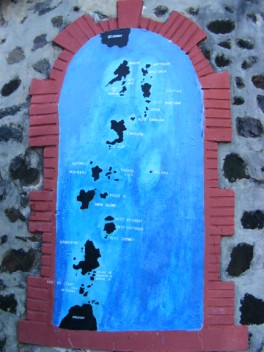
The Grenadines rushed by in a whirl of seabirds, rocks and sea currents. Every island it seemed housed tower blocks of holidaying terns, laughing gulls and a good number of other species thrown into the mix. As we ticked off day after day of relentless surveys, we began to secretly hope the odd island might not hold seabirds!! Our typical day would involve, setting off at the crackers from our anchorage and sailing/motoring around a chain of islets with binoculars strained. Once breeding was verified Megan and I (and David, if Lista could be anchored) would jump into the water with dry bags full of survey kit and swim to the island.
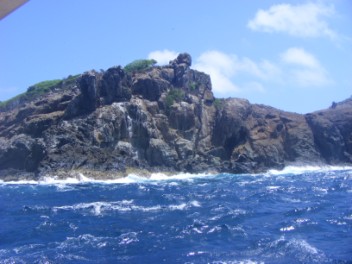
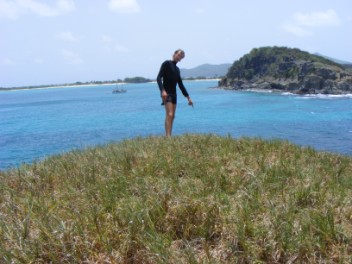
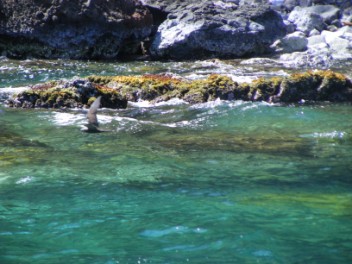
Before being pounded against the cliffs by waves or speared by urchins, we would heave ourselves up onto land and begin equipping ourselves. This would generally involve jeans and long-sleeved shirts to ward off biting insects and skewing plants. Then we would scour the entire island for nesting seabirds and record evidence thereof. If the birds were so thick, that clouds rose from the island, we would grab our pre-marked string and count birds and their nest, eggs etc. within a grid of plots. The number of breeding birds could then be extrapolated for the island by multiplying the number of inhabitants of a plot by the area of the colony.
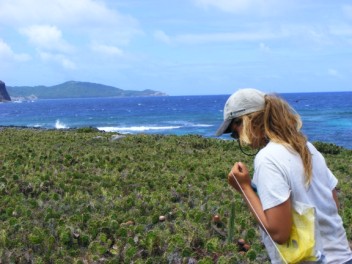
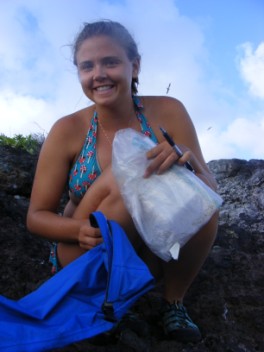
Once completed, we would stumble, gasping for water back to Lista, swimming the gauntlet of crashing waves. Leaping aboard, we would down pints of water and stuff food into our mouths before setting off to seek out more islands and seabirds. By the end of the day, blasted by the sun and waves, we would start the never-ending process of writing up the day’s records. Then once the sun had set, Dave would sit up on deck and broadcast the cackling call of Audubon’s Shearwater to the listening islets in the hope of a response from an incumbent Shearwater. Jobs done and a meal of sweet steamed pumpkin and rice knocked back, we would collapse into our bunks and dream.
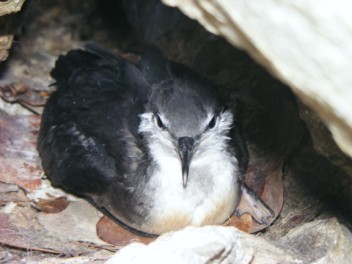
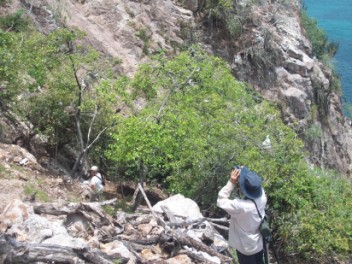
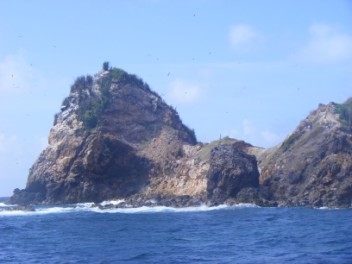
So many incidents peppered the Grenadines; a chain of islands of immense beauty, of the quintessential Caribbean kind, but also of the rugged, towering and wind sculptured variety. We found some of the greatest diversity of species and abundance of seabirds within their folds. This was likely due to their remoteness from human disturbance and threats. We were also surveying them during the optimum breeding season, May-June, when both the year round residents and migratory breeders are present. Next year we will be surveying the other islands in this feckoned period so will be able to compare abundance across the archipelago.
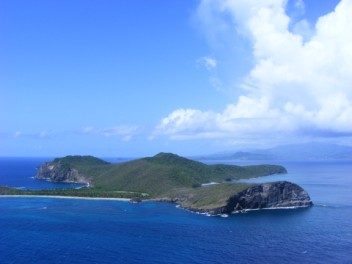
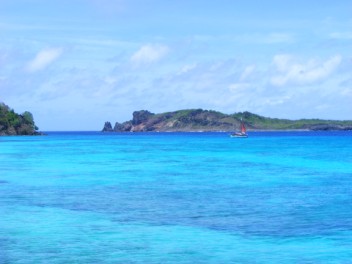
A friend of ours christened our research as, ‘A survey of the worst anchorages in the Caribbean!’ Most sailors (or ‘cruisers’, the geriatric name given to sailing live-aboards) travel down the lee-ward sides of the islands and find cosy anchorages where there is little swell. We, on the other hand, blast down the unchartered windward sides of islands, seek out the most treacherous rocks and go where others will not! Incident wise, we lost rather too many of our ‘nine lives’ this year. Dave and Megan were nearly swept out to sea in strong currents when swimming back from an islet, Petit Cay. As they looked through their masks, they saw jetsam furiously flying along the sea floor which was carrying them with it. Needless to say they made it back to Lista, but will not be forgetting Petit Cay too quickly. Whilst Megan and I were surveying on Battowia, Dave had to deal with the tumultuous sea. First it caused the anchor rode to snap dislodging the anchor winch from Lista’s decks. Then, a paddle flew into the sea and Dave stupidly jumped in to grab it, but soon realized that Lista was receding and the currents were pulling him away. Gradually, he clawed his way back to her, chucking the paddle in front of him and madly swimming forward a few strokes. Then when we finally yanked the anchor up we found it was twisted!
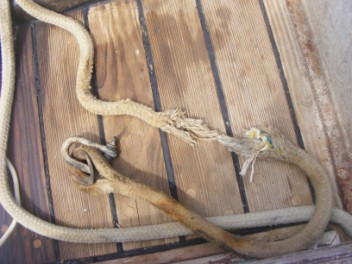
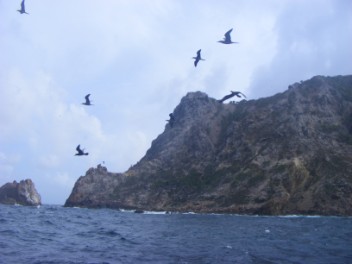
Megan and I paddled the kayak to a fearsome looking extinct volcano rising from the sea, Diamond Rock. We took ages to paddle there, as once again strong currents belted through between Diamond and Isle de Rhonde to the South. We couldn’t see anywhere to land, as waves continuously blasted the sides of the island. We kept powering forward desperately trying not to lose our way. Finally we decided upon an inlet and we surfed the kayak into it, skewering her bow against the rocks. We grabbed our dry bags and pulled the kayak up.
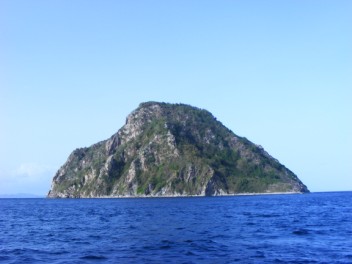
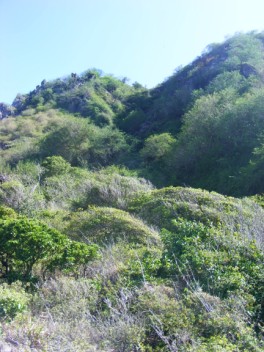
Once we had completed the surveys, we found that the waves were worse and were whipping into the inlet at a regular fearsome pace. We worried we would get stuck, corkscrewed into the narrow entrance so we tried pulling the kayak around and pulling ourselves into the kayak from the water, but the waves battered us against the rocks and Megan fell out of the kayak with a foot trapped in it. She managed to extract it, but it was a shock. So we had no choice but to leap into the kayak in the cauldron of waves and paddle like crazy to stop ourselves being bashed back into the inlet... and it worked..... we couldn’t believe it. Jubilant, we paddled with the current, pulling us back to Lista. Adult and juvenile Brown Boobies kept circling us, within a metre or two of us, hanging in the air, beaks moving from side to side for full examination, as if to check we were ok!
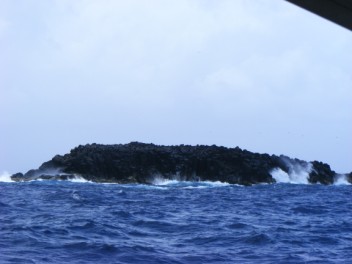
Then came Bonaparte Rocks, lying to the south-east of Carriacou. These are bands of particular nasty low lying rocks that break through the turbulent surface of the sea like the jagged teeth of a hag. Two bands protrude and we needed to examine them both. As we neared closer on Lista, birds plunged through the surf in a feeding frenzy and boobies, terns and gulls huddled on the barren islets.
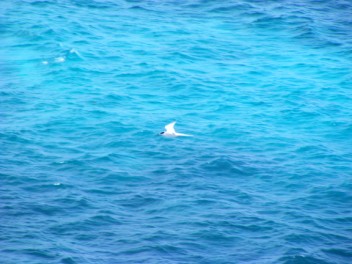
It was difficult to determine who was nesting as Lista bashed in the waves and there was no way we could swim or kayak to them to get a closer look. After much straining through binoculars we resigned to a count of birds with ‘potentially’ nesting recorded. We started to manoeuvre away from the rocks and I said to Dave, ‘We have records for every island in our study area, we are just going to have to leave these as potential breeding records.’ And on that, Dave swung Lista around. We had just about a 100% rate of gathering records and he didn’t want to deprive us of these.
As he turned Lista through the surf for a closer inspection, we heard an almighty crack and Dave screamed, ‘Nooooooooooooooooooooo!’ Foam leapt at Lista’s bows, we had smashed into rocks. Dave barked instructions and I crashed below deck and madly pulled up floorboards to see if water was coming in, then grabbed the pumps. I was frantically praying that we were not going to go down now, not now that we had come so far, praying that water was not going to start lapping around my ankles. But nothing happened. We finally found a leak, a steady trickle of water seeping in low at her starboard side. We turned Lista back to Carriacou to investigate the damage. The charts had been wrong, two depths had been switched and we had crashed in what should have been 10m of clearance. It was a hideous experience, shaking all our nerves and highlighting how lucky we had been so far surveying in unchartered waters close to cliffs. On inspection we found that the rocks had gauged our sacrificial keel and that we had had a narrow escape.
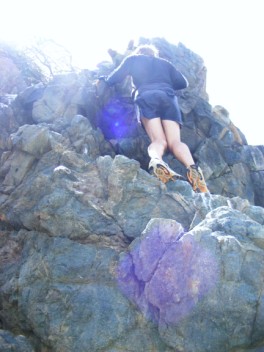
Some final stats on the incident topic:..... Number of Acacia species met- 5, number of crumbling cliffs-10, number of rock landings- 56, number of sea urchin spines- 42, number of biting ants-214 000, maximum number of layers penetrated by Devil’s Nettle-3, number of cacti spikes-345 000, number of vicious currents -4, number of times ran aground -1! Dave and Megan had a particularly nasty encounter with sea urchins when landing in surf on rocks, even with gloves on, spines managed to perforate fingers, feet and bums! I got to the stage where I had to tie planks on my shoes to prevent cacti penetrating and the final sorry saga was when my leg blew up and I was christened ‘club-leg’ thanks to the poison needles of the Devil’s Nettle.
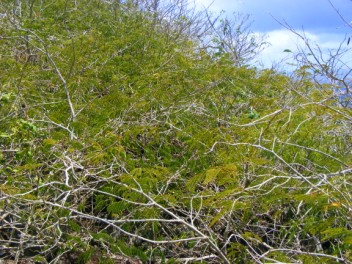
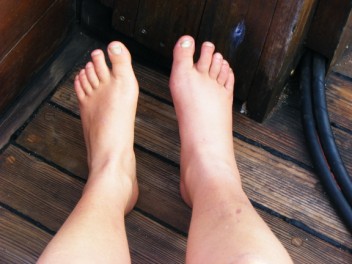
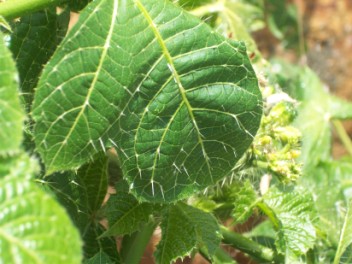
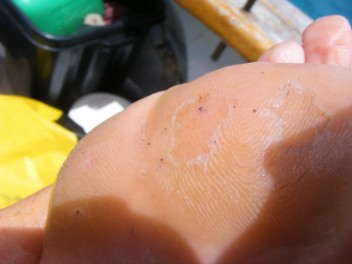
But there were some extraordinary sights too. Arriving into Battowia was like finding Eden. Boobies flooded the sky and circled round and round us, before bungling attempts at landing on us. Magnificent Frigatebirds swept high above and hanged from the islands cliffs like giant vampire bats. As we scrambled the slopes we found Red-footed Booby chicks and parents peering down at us, which from afar, in their white fluffy livery, looked like snow smattering the entire island in drifts. We also found our largest Laughing Gull colony; nests, with chocolate splattered eggs speckled the entire island. Then there were the lizards, snakes and iguanas scrambling over the boulders and the giant spider webs that stuck to us as we scrambled under the scrub.
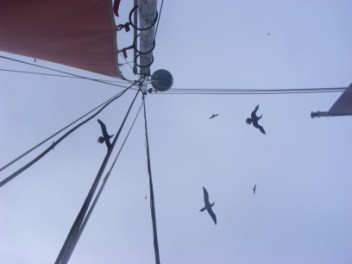
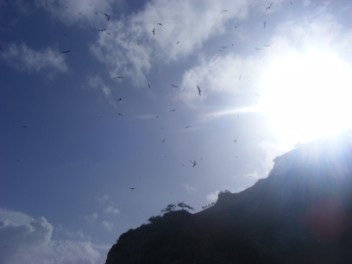
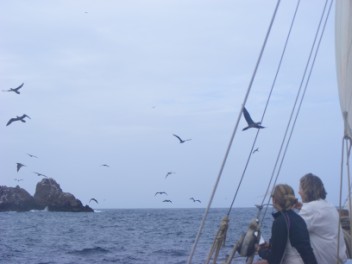
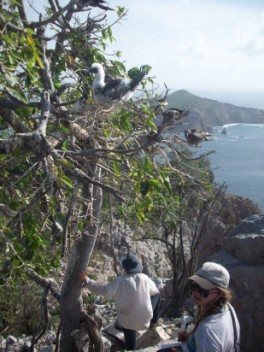
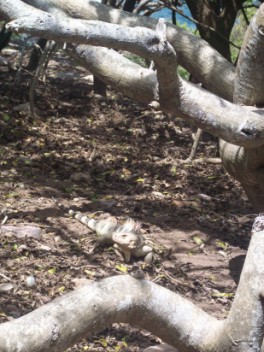
For sheer seabird extravaganzas, Battowia, Les Tantes and Diamond Rock were the greatest with nests and birds pinned to trees and cliffs. But then there was Petit Canouan...... nothing could rival it for sheer numbers of one species, Sooty Tern. We have yet to analyse the results, but it’s pointing to over 100 000 birds!! We learned from local fishermen that the island is known as the home of the ‘Egg Bird’ and that locals war over the harvest, with gun battles being reported! The looters have been burning the bush on the island each year to the extent that it has become a tall grass community, the desired habitat for Sooty Terns (the Egg Birds) but not for the Red-footed Boobies or Magnificent Frigatebirds that were believed to have bread their formally.
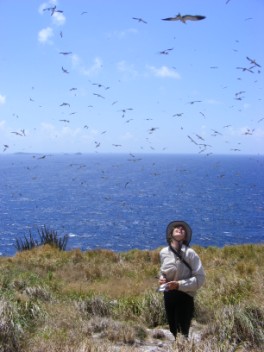
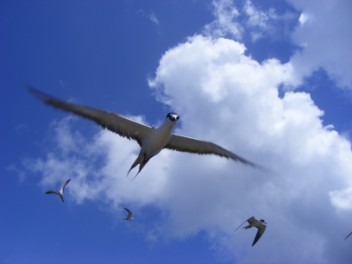
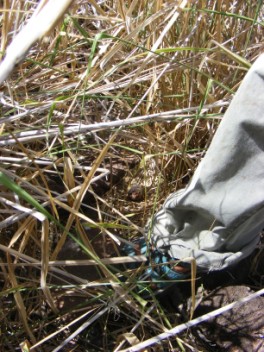
The grasses were often over 2m high and the Sootys were everywhere. At every step that Megan and I took, we had to scour the ground for fear of standing on a chick, egg or adult. Birds were screeching and crawling all around us, seemingly falling from the sky. I had never seen anything like it. Dave, meanwhile, was stuck on Lista watching the clouds of birds float over the island. We had tried attaching Lista to rocks but she had broken free and then on a second attempt, Dave found her stern following him within a metre of partnering with the cliffs as he tried again to secure a line (depths shelving too quickly to anchor to the ground). So he abandoned the idea with too many currents and back-eddies and hove-to instead. When Megan and I finally finished our sampling plots and swam back to Lista, Dave chucked water bottles to us and we glugged back the nectar in the sea. Freeing Dave from his charge, I helmed as he swam off to snorkel the sheer under-water slopes and there nestled on a shelf was a Nurse Shark.
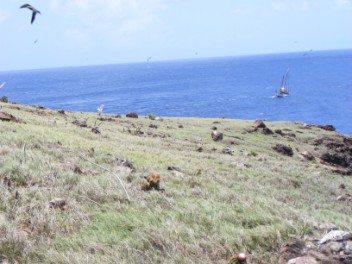
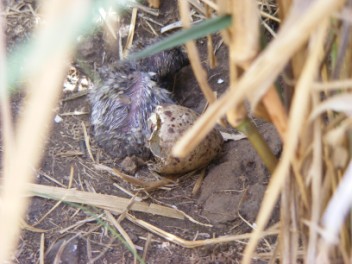
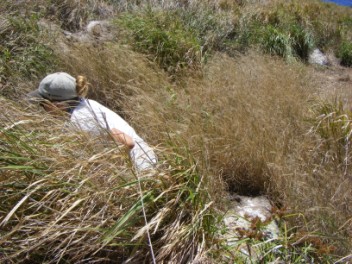
On the subject of ‘egging’, one of the most stark encounters we had was on Petit Canouan. We had counted all the Laughing gulls eggs and nests and had swam back to Lista and were having some lunch when we noticed some guys climbing on to the island. They looked suspect, but it wasn’t until later when they scrambled into their motor boat and came across to us for some water that we saw their buckets, full of the Laughing Gull eggs we had just be counting! We couldn’t believe their audacity, especially as we had ‘Seabird Survey of the Lesser Antilles’ plastered onto Lista’s hull.
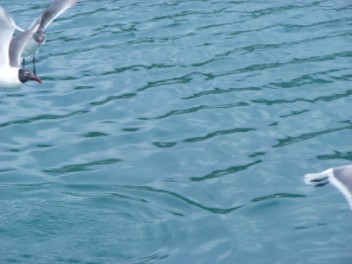
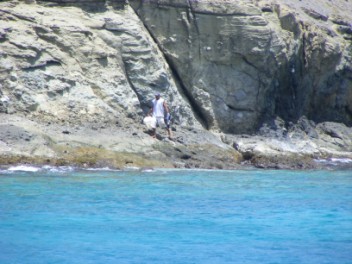
The harvesting of seabird eggs and adults continued to crop up during our surveys. A guy on St Vincent mentioned that he visited Battowia at least twice a year for eggs, due to their aphrodisiac qualities (a lame excuse it seems, to market any suspect bit of wild food). We found blood smattered rocks, skulls and feathers remaining from Red-footed Booby diners collected on Battowia and evidence of man (with the likelihood of his hunting birds) on just about every uninhabited island/rock we surveyed. When we showed a bird book to some fishermen who took us to survey a cluster of islets, they pointed out birds, not for their beauty, but for their edibility!!
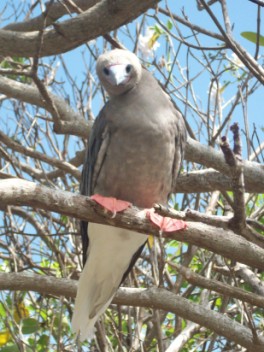
This was pretty unexpected. The main course of seabird decline (and other wildlife) in the Caribbean and many parts of the world is habitat destruction or disturbance. Whether nesting habitat is lost to new swanky tourist developments or when seabird colonies abandon due to the noise of jet skis or the prying of ‘eco-tourists’. The next threat is invasive species: rats, cats, dogs, monkeys, pigs, mongooses and manicou efficiently eat their way through seabird colonies. Seabirds are particularly vulnerable as they nest on the ground and have evolved on islands without mammalian predators. Seabird colonies on islands with introduced predators, if not extirpated already, will soon be.
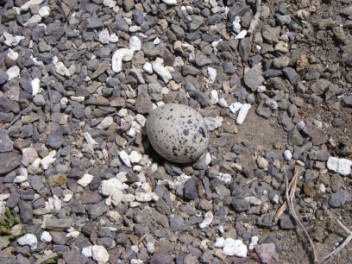
The third threat in the Caribbean is the hunting. Now this was probably fine in the past when seabird levels were estimated to be 10 times the level they are today. But now, when seabird populations are a fraction of the past and sailors are reporting dramatic declines in even the last 15 years, with humans grabbing probably already addled eggs for their supposed aphrodisiac qualities in their 40 horse power gas guzzling motor boats, when there are chickens wondering around every street corner on every island, it does not seem fair to take the wild harvest. Nor does it seem fair (while I am on this rant) that people are eating turtles and their eggs, when just about every species is critically endangered and when there is enough cheap chicken in the Caribbean to feed the entire population (a decent proportion of which is obese). Indeed, Dave and I met an Italian lady in Carriacou who formed the Kido Foundation on the island to protect turtles. She asked us to cover turtle tracks if we found them during our seabird surveys to dissuade potential hunters. A couple of days later, we found tracks on Sandy Island, but we were too late, most of the nests had already been dug up and the eggs taken.
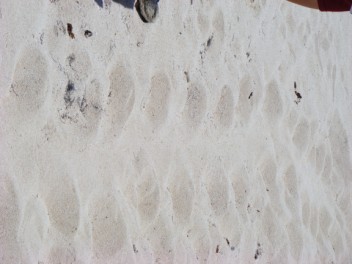
Carriaocu is a beautiful island, in fact I am tapping the diary from the island right now as we begin the process of mending rotten planks... It is a small island, about 70 miles north of Grenada. Sharp, peaks, covered in dry-wood stagger across it. It is wonderfully rural, somehow having escaped development so far. One of the largest expanses of mangroves we have seen stretches along the side of Tyrrel Bay. It shelters birds, fish nurseries and shellfish, whilst filtering any sewage runoff and protecting the bay from storms through its intricate root structure. Brown Pelicans, Magnificent Frigatebirds, Sandwich Terns, Royal Terns and Laughing Gulls wheel in the bay where we are anchored. The boobies and pelicans smash through the water and fish fly into the air and the Frigates snatch fish from under the beaks of their competitors.
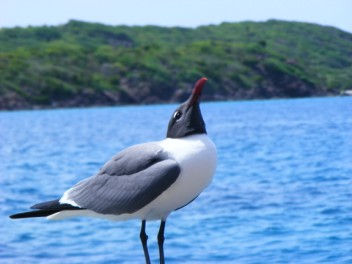
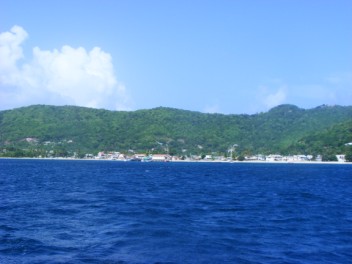
While we were surveying we spent days at the Lazy Turtle trying to connect to the internet and found the most delicious pizzas. Then Dave and I cycled around the island on the quest of finding breeding seabirds. We found mile after mile of sandy tracks under a scrubby canopy at the cliff side, but no breeding seabirds. We didn’t meet a single other person, save a man on his donkey. A grave yard appeared at Jew’s Bay, under poisonous manchineel trees, gradually falling into the sea. It was a haunting sight, sand had been extracted from beaches further down the coast, longshore drift was being stopped and so the grave yard was eroding. We also found a hut where we collapsed starving and consequently had the best meal of curried mutton, pasta, rice and beans and fried vegetables (Carib staples). Then on passing a house with fields full of chickens and cattle, we asked the owner whether we could buy some eggs, to which he plied us with bags full of eggs and would not take a single note in thanks.
Sorry - image not available (Urchins in Megan's fingers)
Megan finally succumbed to the pain of her urchin prickles still nestled in her finger tips and we cycled up a precipitous hill, with monstrous trees, to the hospital. It was a remnant from the turn of the century with a flock of sheep and a line of canons eyeing the sea suspiciously that stretched far into the distance. Finally a huge screen slid open and a petrified Megan was beckoned forward by a doctor who she was convinced was to cut off each of her fingers. He turned out to be young man, newly trained from Trinidad. He smiled at the tender fingers and said the spines would dissolve before long, although we could check on the internet for any alternative cures! Hmm, that was the first time a doctor had pointed us in the direction of the internet for a possible cure.
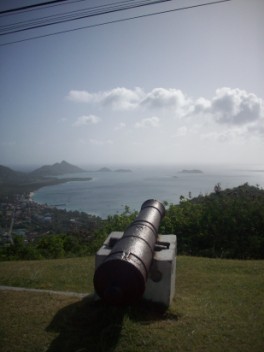
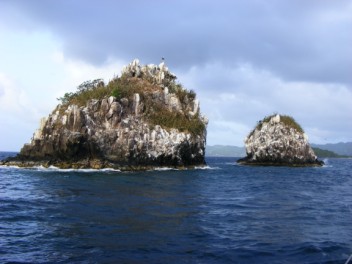
Megan and Dave finally went diving and near to Sisters Rock found some of the richest coral gardens they had ever seen. The sea was full of fish of all sizes and shapes, rays, eels and more nurse sharks. I watched their bubbles from the surface through my snorkel mask, followed a barracuda and viewed Brown Noddies flying centimetres away from my head.
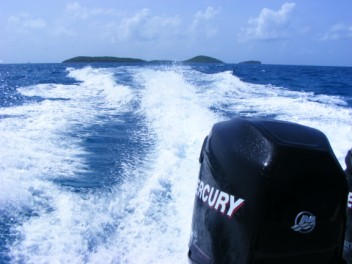
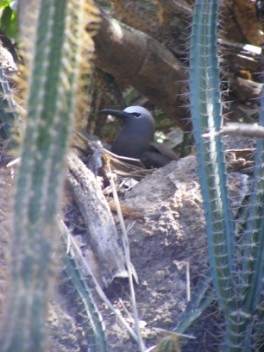
Before Carriacou were the famous Tobago Cays renowned by yachts people for their white sands and coral reefs. We sped off in a park motor boat to some seabird islets where Dave found our first Audubon’s Shearwater chicks nestled in a crevice. It was a fantastic sight after only ever having seen the grey forms of the nocturnal adults lured to our broadcast calls flapping in the sky. Here we finally eyeballed the beauties up close. We also found our first Roseate Tern eggs perched precariously on rock ledges by their nonchalant squawking parents. Then back to Lista and the Cays, all three of us managed to perch on the kayak and in pyramid formation circumnavigated an island whilst counting the number of breeding seabirds.
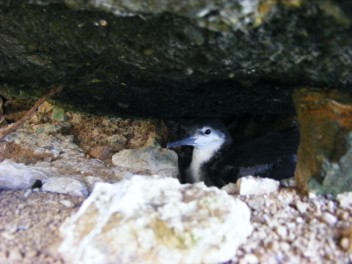
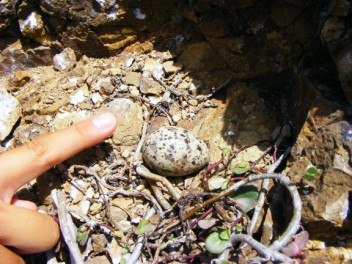
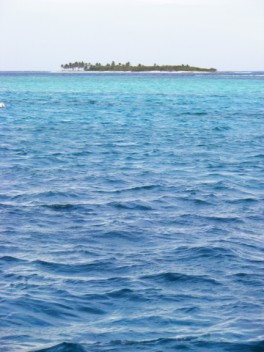
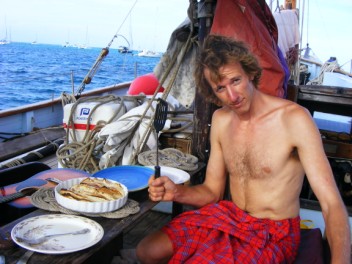
In the middle of all of this dawned our first wedding anniversary. Megan stoically guarded Lista and we finally left them in the afternoon of 17 May and rowed ashore to Baliceaux. We scrambled under the poison apple tree (Manchineel) and found a grassy patch above the beach to tether our tent. We were shattered and lay down after the effort. Suddenly I noticed a cow pat that appeared to be moving? Screwing my eyes up I looked again and there before us was a tortoise!! We went over to investigate, but it had already ‘darted’ under a bush. We sat incredulous at the occurrence, when we noticed another and then another and then realized that the entire hillside was crawling with the things! It was like a mini version of herds of Wilderbeast grazing on the Serengetti, with large and tiny totoises gradually munching their way along the slopes.
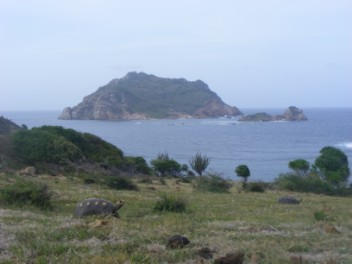
We had attempted to walk, but lethargy overcame us and we instead accomplished a series of ‘sits’. We managed to walk up the hill and found a small hut. A man was shelling peas (of the famous rice and pea variety). We sat on the bench with him and delivered the odd comment. He was born in the Caribbean and had never wondered far, save Baliceaux which he visited most weeks, throughout his life on his boat from Bequia. He knew about wildlife, fish, the land and islands, all their secrets. He kept chickens on the island and had ridded it of invasive mongooses which had eaten their way through his flocks. He also had cattle and burnt back areas of encroaching bush annually for them, explaining the ferocious fire we had seen earlier. Soon he got up, it was clear he had had quite enough of chatting, so we walked over the valley. We sat in the pasture with the tortoises (believed to have been brought over by the Amerindians from South America) and gazed over to Battowia.
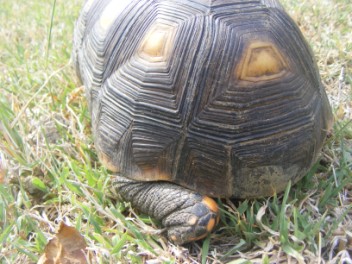
That evening, we celebrated our anniversary with pasta and weevils. It was the first time we had cracked into the little critters, but there seemed no alternative, we couldn’t through the rabid pasta away, besides the little mites held good stores of protein. Anyway, I had read that at first one picks weevils out of food, then one eats them begrudgingly, finally one actively seeks them out! Luckily it was dark, so we couldn’t really see what we were eating! Unfortunately, none of us ever really grew to enjoy the wee beasties that popped up in our pasta, rice or noodles, even though, when wondering around the boat, or dropping out of the sky into your book, they were such jolly looking little characters....!
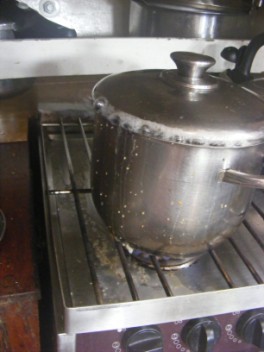
There was also Mustique and the wonderful Dianne who showed us around the island and after only having met us for an hour, offered us a shower in her Aladin’s Cave of a house. To three stinking, salty, surveyors this was bliss (well for two of us, Dave is never too worried). One of the freakiest episodes was sailing from Mustique and seeing a ‘fin’ rearing from the sea. It was in fact the metal from a colossal shipwreck (Antilles) long sunk but still piercing the surface of the sea and ready to wreck further more ships (though not many venture through the tide swept channel).
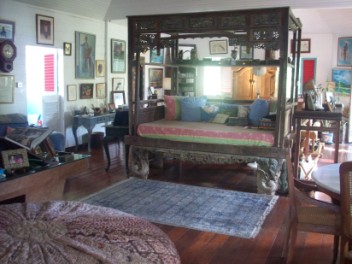
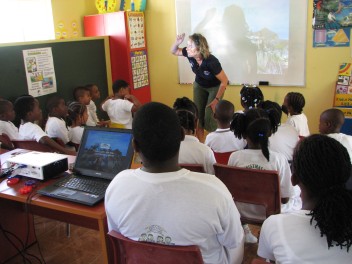
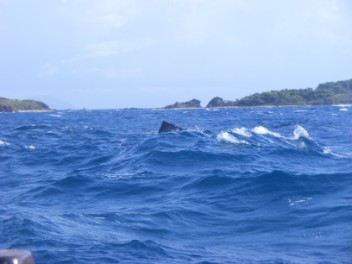
There were the Savan Islands and the old fishermen drying and salting fish in the sea air. Dave admired their stoic countenance and apparently traditional and thoughtful ways. They potentially represented small scale, sustainable fishing (if fishing can be sustainable?) There were the shoal of squid marching through the sea, we couldn’t believe the primordial sight and swam after the retreating spectacle. These work commutes made us feel like the smuggest so-and-sos on the planet, that is before we nearly plunged to our death whilst ascending some crumbling cliff.. but that is the lust for life....?
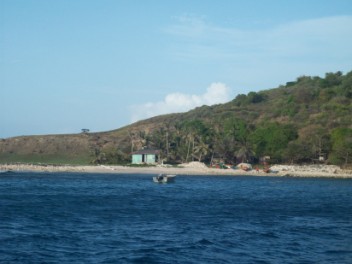
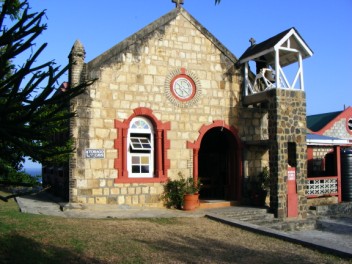
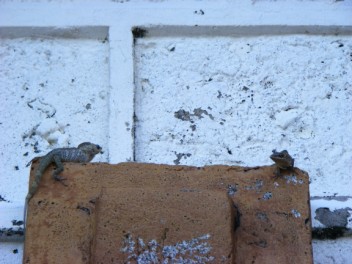
As you can probably see from the content of this diary, I am lagging, with not a word rattling around in my head. I cannot, however, end before telling you about Mayreau, glorious Mayreau. It is a tiny island near the Tobago Cays where we met Father Mark de Silva. We met to quiz him about seabird records and after over three hours of discussion until we were all slipping off our seats in yawns, finally bid our goodbyes. He was remarkable, such a knowledgeable man and natural historian with a particular interest in invertebrates. We visited his church one Sunday and sat amid drums, fiddles and voices belting out tunes over the magical Caribbean Sea far below us. It was a fantastic atmosphere, with the congregation from all denominations free to dedicate prayers (one lady certainly took the opportunity with a good 25minute monologue!). Father Mark introduced us and our seabird work and explained the importance of conserving seabirds as they were the animals that ate the diseased or old fish in the food chain and kept stocks healthy for us to consume. After the service we chatted with the congregation outside of the tiny pebbled church and knew that we would have to return.
And a few more images of the Grenadines....
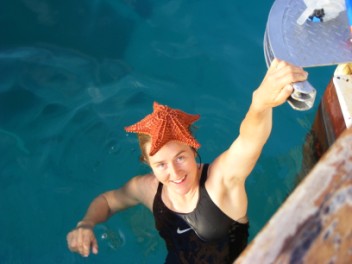
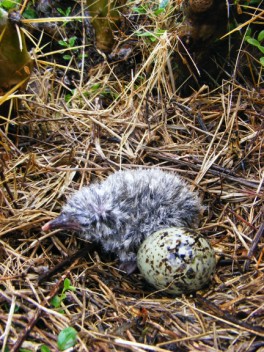
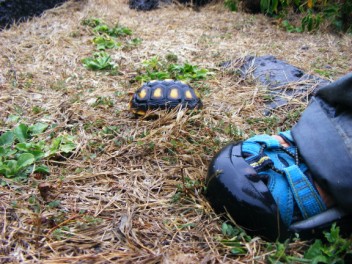
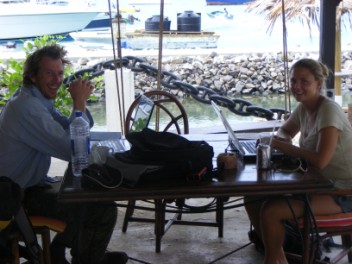
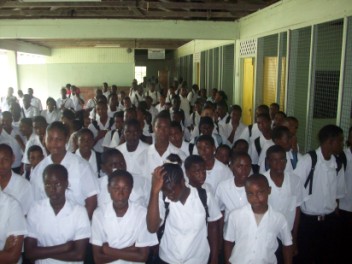
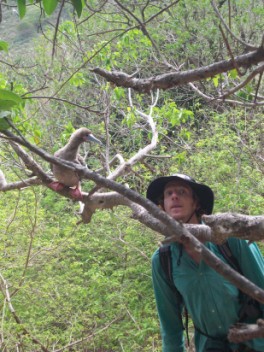
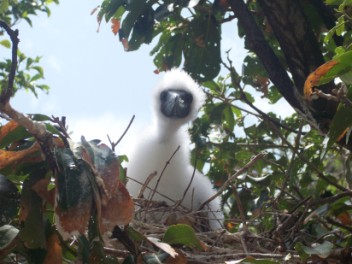
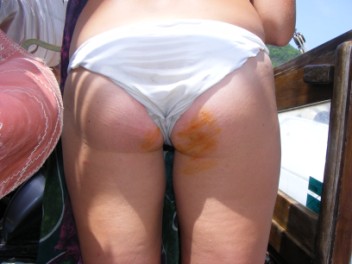
Back to previous section - St Vincent
Forward to next section - Grenada
This page hit Count : 7393
This is the Lista Light Website, for the travels of the sailing boat Lista Light
Click here for text-version of site